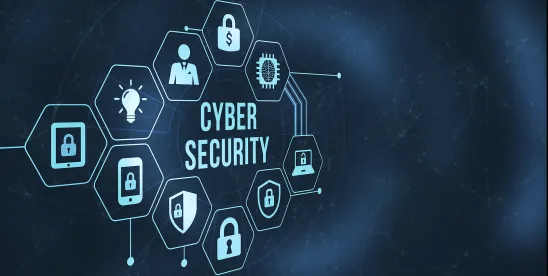The wireless industry has revolutionized the way we connect, from facilitating teleworking, distance learning, and telemedicine to allowing the American public to interact virtually in almost all other aspects of their daily lives. Leading policymakers – federal regulators and legislators – are making it a top priority to ensure that the wireless industry has the tools and resources it needs to keep pace with this evolving landscape. This blog provides monthly updates on actions by federal regulatory bodies responsible for communications policy and Congressional efforts to support wireless connectivity. And this month, we highlight a report by the U.S. Government Accountability Office (“GAO”) on key agency practices to help improve receiver performance in wireless devices.
Regulatory Actions and Initiatives
The GAO Issues a Report on Receiver Performance. On July 18, 2024, pursuant to a Congressional directive, the GAO released a report discussing key practices that could help the FCC and NTIA address challenges to improving receiver performance. After speaking with industry associations, commercial licensees, and manufacturers, the GAO identified five key challenges to improving receiver performance and addressed how the FCC and NTIA can consider receiver performance as part of their spectrum management efforts. The GAO made three recommendations to the FCC: (i) define goals for all activities and desired outcomes and align the goals across all organization levels; (ii) identify strategies and resources to achieve these goals; and (iii) identify and mitigate obstacles within and outside the agency to achieving these goals. The GAO further concluded that while NTIA mandates certain performance standards and collects information on federal receivers through its process to authorize spectrum use, it has not fully aligned its activities to broad spectrum efficiency efforts, including spectrum management goals shared with the FCC. Accordingly, the GAO recommended that NTIA identify and assess current information sources related to federal receiver performance, which can help ensure that spectrum is effectively managed moving forward.
Wireless Spectrum
NTIA Announces Meeting Soliciting Input on National Spectrum Strategy Band Studies. NTIA announced that it will conduct a meeting on August 23, 2024 to solicit input on National Spectrum Strategy spectrum band studies, with a focus on the study of the 3.1-3.45 GHz and 7.125-8.4 GHz bands. The meeting will begin at 10:00 am and will be held at the Commerce Department (Auditorium). Individuals who wish to attend the meeting must register a week in advance, or by August 16. This will be the first of a series of meetings implementing the National Spectrum Strategy.
The FCC Grants Relief to 3.5 GHz Band Users Because of Hurricane Beryl. The FCC’s Wireless Telecommunications Bureau (“WTB”) took several actions to assist communications service providers in the wake of Hurricane Beryl. First, the WTB released an Order on July 8, 2024, conditionally granting Federated Wireless’s (“Federated”) request for an emergency waiver of the FCC’s rules requiring the use of Environmental Sensing Capabilities (“ESCs”) to detect and protect federal incumbent users in the 3.5 GHz band from harmful interference in Dynamic Protection Areas (“DPAs”). Federated requested permission to treat the DPAs in the path of Hurricane Beryl as “inactive” so that ESCs would not automatically activate them in the event they were unable to detect a signal from a federal system. The Bureau granted Federated’s request because the storm could have caused power outages and affected the availability of backhaul, both of which could have led to the automatic activation of the DPAs and disconnection of Citizens Broadband Radio Service Devices operating in the 3.5 GHz band. Second, the WTB released a similar Order on July 12, 2024, conditionally granting Google’s request for an emergency waiver of the FCC’s rules to detect and protect federal incumbent users in the 3.5 GHz band from harmful interference in certain areas affected by Hurricane Beryl. The WTB conditioned both grants on, among other things, requiring the immediate activation of the subject DPAs upon notification from the FCC, NTIA, or the Department of Defense.
The FCC Announces New Rules for the 5.9 GHz Band. FCC Chairwoman Rosenworcel issued a News Release on July 17, 2024, announcing that she has circulated for vote among her fellow Commissioners a Report and Order on the 5.9 GHz band that would, if adopted:
- Codify in the FCC’s rules technical parameters for Cellular Vehicle-to-Everything (“C-V2X”) technologies operating in the band, including power and emission limits and message prioritization;
- Allow the auto industry to use the upper 30-megahertz portion of the 5.9 GHz band through three 10-megahertz channels either separately, in combination as a 20-megahertz channel, or as a single 30-megahertz channel;
- Establish prioritization of safety-of-life communications; and
- Provide a two-year timeline for sunsetting the use of existing Dedicated Short-Range Communications-based technology in the band.
The rules would not require licensees already operating under C-V2X waivers to make changes to their currently deployed systems.
The FCC Seeks Public Input on Offshore Use of 3 GHz Spectrum. On July 16, 2024, the WTB released a Public Notice seeking comment on a Waiver Request submitted by North East Offshore LLC (“North East”) to use spectrum in the 3.1-3.55 GHz band approximately 40 km offshore. North East requests a waiver because there is currently a freeze on the processing of non-federal applications seeking use of the 3.1-3.55 GHz band, as the FCC evaluates its potential use for non-federal services. North East asserts that those efforts “have concluded” and that the FCC “did not address off-shore uses” of the 3.1-3.55 GHz band. The deadline for submitting comments in response to the waiver request was July 31, 2024. Reply comments are due August 12, 2024.
Wireless Networks and Equipment
NTIA Receives 227 Applications for the Public Wireless Supply Chain Innovation Fund. NTIA issued a blog post on August 1, 2024, announcing that it received 227 applications requesting more than $2.94 billion in funding from the Public Wireless Supply Chain Innovation Fund. NTIA notes that it expects to begin making awards later this year, which will target two critical areas: (i) open radio unit commercialization: accelerating the development of open radio units to the point where they meet the needs of wireless carriers and are ready for commercial trials; and (ii) open radio unit innovation: improving the overall performance and capabilities of open radio units through targeted research and development.
The FCC Announces the Effective Date of its Voluntary Cybersecurity Labeling Program. The FCC’s Public Safety and Homeland Security Bureau (“PSHSB”) released a Public Notice on July 30, 2024, announcing that the FCC’s rules setting out the goals, definitions, parameters, and processes related to the Voluntary Cybersecurity Labeling Program that do not require an information collection will go into effect on August 29, 2024. Amendments to the rules that require an information collection, such as applications for the role of Cybersecurity Labeling Administrator or Lead Administrator, and applications seeking authority to use the FCC IoT Label, will not be effective until the FCC’s Office of Management and Budget has completed its review under the Paperwork Reduction Act.
The FCC Reports to Congress on the Status of Rip-and-Replace Efforts and Adds New Covered Entities. The FCC’s Wireline Competition Bureau (“WCB”) released its fourth Secure and Trusted Networks Reimbursement Program (“Reimbursement Program”) Report (“Report”) required by Congress on July 1, 2024. The FCC reported that, since its last report released in January, the WCB has, among other things, received 23,830 reimbursement claims across 122 of 126 applications, which is an increase from 10,847 claims from January’s report. Approved reimbursement claims now total $693.18 million, which is a $296.65 million increase from the total approved in January and leaves approximately $1.268 billion of the $1.9 billion in appropriated funds left for reimbursement. The WCB estimates that 12% of recipients have now completed their rip-and-replace work. This is a slight increase from an estimated 10% in January. The WCB’s next report is due to Congress by December 27, 2024. In addition, the WCB released a Public Notice reminding Reimbursement Program participants that their the next spending report is due August 10, 2024. Finally, the WCB released a Public Notice announcing that it has granted eight requests for extension of support recipients’ rip-and-replace deadlines. Grant of these requests continues to be based on funding and supply chain issues.
Relatedly, the PSHSB released a Public Notice on July 23, 2024, announcing that it has added cybersecurity and anti-virus software produced or provided by Kaspersky Lab, Inc. (and its affiliates) to the list of communications equipment and services that have been deemed to pose a national security risk – i.e., the Covered List. The full updated list is included in an Appendix to the Public Notice and is also available here.
The FCC Adopts Proposals Seeking to Require Mobile Phone Unlocking. On July 18, 2024, the FCC adopted a Notice of Proposed Rulemaking (“NPRM”), the draft of which we previously reported on, that seeks comment on requiring all mobile wireless service providers to unlock mobile phones 60 days after the device is activated with the provider. The NPRM also asks if, in the event the FCC adopts a 60-day unlocking requirement, wireless service providers should be required to ensure that all new handsets activated on their networks are capable of automatic unlocking after two years. And, for both a 60-day and two-year automatic requirement, the FCC seeks comment on whether and how wireless service providers should notify their customers when their handset locking period has ended. Comments and reply comments on the FCC’s proposals will be due 30 and 60 days, respectively, after Federal Register publication, which has not yet occurred. In a News Release accompanying the NPRM, the FCC commented that “[n]ew unlocking rules would allow consumers the freedom to take their existing phones and switch from one mobile service provider to another more easily, as long as the consumer’s phone is compatible with the new provider’s wireless network.”
Legislative Efforts
The House Introduces a Bill that Would Fund the Rip-and-Replace Program, Restore the Affordable Connectivity Program, and Require a Spectrum Auction to Offset Costs. On July 30, 2024, Representatives Budzinski and Carey introduced the Secure and Affordable Broadband Extension Act. If enacted, the bill would appropriate $3.08 billion to the FCC to fully fund the rip-and-replace program; renew the Affordable Connectivity Program by appropriating $6 billion for the program, among other things; and require the FCC to reauction unassigned spectrum, including AWS-3 spectrum, which would offset costs associated with the bill. The bill is now in committee, and the Senate has introduced companion legislation.
The Senate Introduces a Bill that Would Improve Federal Agencies’ Processing of Broadband Permitting Applications. On July 29, 2024, Senators Thune, Luján, and Barrasso introduced the Accelerating Broadband Permits Act, which would, if enacted, require federal agencies to take steps to timely meet the 270-day deadline for reviewing and processing broadband permitting applications. Specifically, it would require federal agencies to develop data controls to improve the tracking of applications, take actions to address factors that are contributing to delays in processing applications, and annually report on such factors to Congress, among other things. The bill is currently in committee.





 />i
/>i
